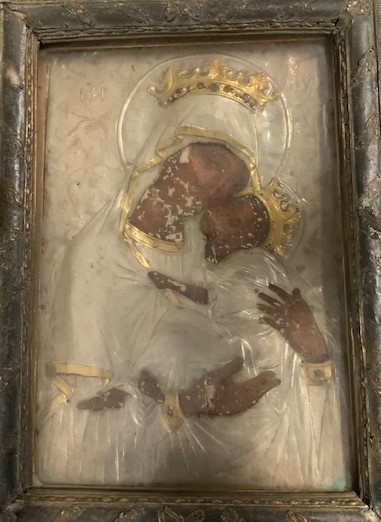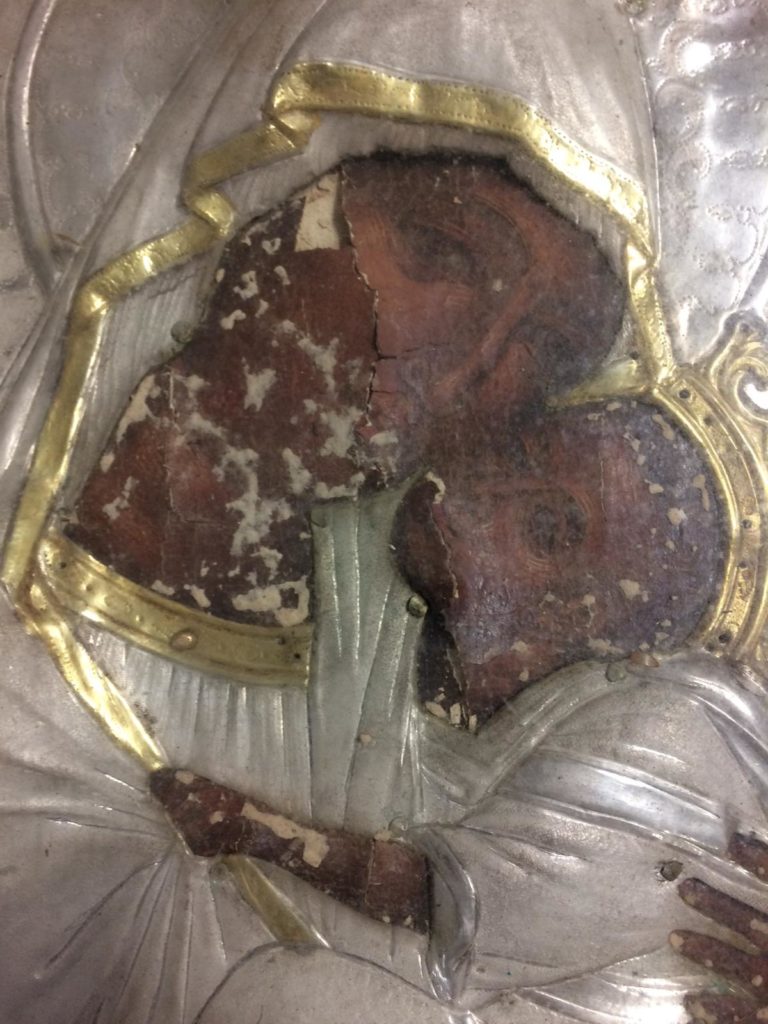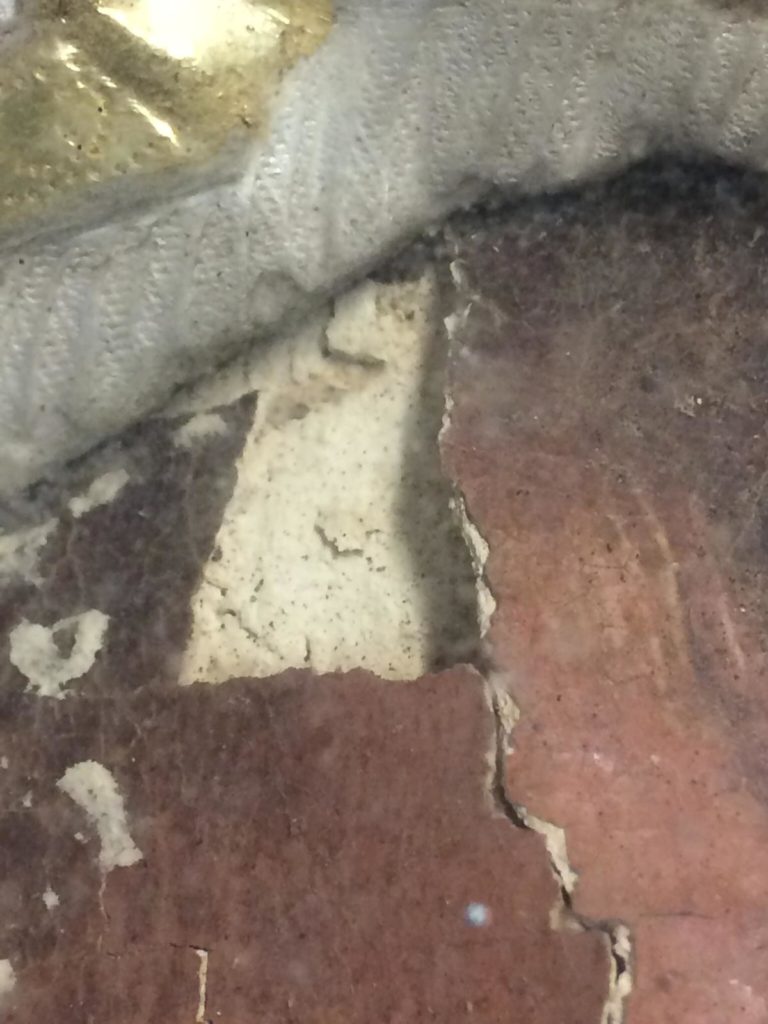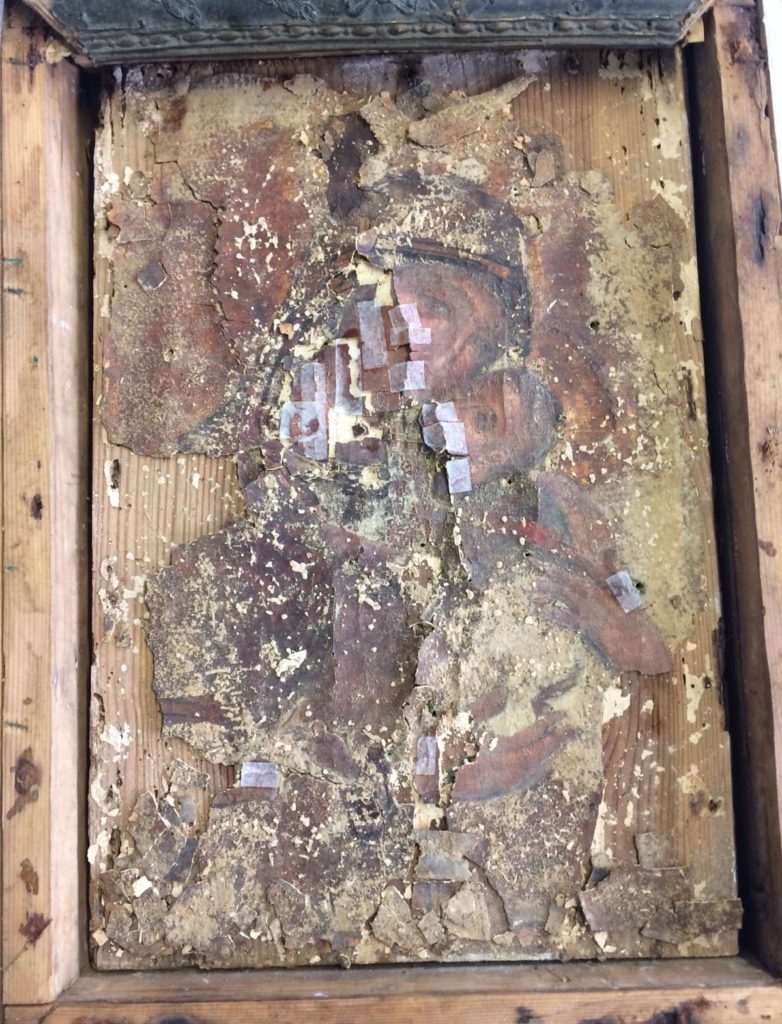Madonna and Child, Icon with Riza of metal, Collection of the Museum of the Basilica Notre-Dame de Marceille in Limoux, France
The conservation-restoration work is being done on a voluntary basis. The amount of the donations previously collected have been put together in a global fund for the three ongoing projects in order to be able to start the work on the three works.
Help us help them !
Financial cost of taking care of the work :
Financed
by the funds of the association thanks to the support of its members and generous donors
Identification
Item : Icon
Topic : Virgin and Child
Technique : Tempera (egg)
Nature of the support : Softwood
Signature : Unsigned
Era : 19th century
Dimensions with frame : 53 x 33 x 8 cm
Dimensions of the icon only :
Old Restoration interventions : No
Place of conservation : Museum of the Basilica of Notre-Dame de Marceille (Limoux, France)
Review date : March 06, 2020
The Muses & A.R.T association was contacted by Mr. Gaël Favier, curator of the museum of the Basilica of Notre-Dame de Marceille in Limoux, to intervene on an icon in great danger. This work, a Virgin and Child, was offered in 1862 by the Countess of Chambord on the occasion of the feast of September 14 which pays tribute to the cross of Christ. It therefore represents an object of devotion and an important piece of the museum which is currently managed only by an association of volunteers “Les amis de Notre-Dame de Marceille”.
CONDITION REPORT
Constituents Examination
The icon is made on a soft wooden panel 2 cm thick. It is placed in a frame box made of wood and brass worked, covered with a glass.
The pictorial layer is composed of a white preparation that is called for icons “levkas”, and a colored layer made of tempera (pigments and binding to the egg).
As is traditional in the Icons, the paint here is not covered with a layer of varnish but rather with a mixture of oil and resin, the “olifa”, which is an integral part of the colored layer.
Alterations examination
The wooden support of the icon has many alterations. The essence of the wood is tender and its spongy appearance reveals attacks of xylophagous insects. The worms when they multiplied dug galleries and fed on the cellulose of the wood with serious consequences on the conservation of the entire work. The entire frame is clogged and damaged.
The pictorial layer of the work presents very significant alterations resulting from the conditions of conservation, the deficiency of the wood support and the presence of microorganisms on the colored layer. There are on the visible parts of the pictorial layer a tenting delamination and clusters of white microorganisms that will probably be found on the entire surface of the work. We also see fragments of pictorial layer that have detached from the wood support and accumulated under the riza.
TREATMENT PROPOSALS
Conservation Operations
Before the removal of the Riza, the most fragile areas will be secured with small strips of Japanese paper and adhesive.
The metal is attached to the wood support by about twenty motley and rusty nails. They will be removed gently with a small clamp after applying a sobering to their base.
The Riza removed, the total area of the work is accessible. It will then be necessary to remove the microorganisms, to reposition as best as possible the fragments of usable pictorial layer and to apply a fungicide on the entire colored layer.
The wood support must also be treated with insecticide injections and a synthetic resin.
At the end of these treatments, the consolidation of the painting can be carried out safely fraction by fraction. It will be a question of injecting between the pictorial layer and the wood support natural glues and then reactivating them hot. This operation makes it possible to restore the flatness and adhesion between the pictorial layer and the support of the work thus ensuring its durability.
Restoration Operations
Since Olifa is an integral part of the colored layer, it will not be lightened. The careful removal of the dirt will therefore be done through suitable cleaning agents.
This will be followed by inpainting. The lacunas are filled and upgraded with a fill that is then polished and shaped to imitate the relief of the surrounding surfaces and be in continuity of structure with the original pictorial layer. Retouching is the last step in the reintegration of the losses. It will be illusionist to imitate the artist’s workmanship and seek the chromatic identity in relation to the original pictorial layer. For the sake of conservation, a final varnish based on Dammar resin will be applied as a protection of the restoration.
These operations, carried out with stable and reversible products, will allow the work to regain its historical and aesthetic integrity. It will thus be possible, after cleaning and restoring the Riza, to return it to its frame, which will itself be consolidated and cleaned.
